
Clients ALWAYS ask us, "What is the trick to rank #1 on Google for our website?" Welp, it's not the 2000's kids. There are no tricks anymore. However, there are basic things you can do to ensure you rank as high and as quickly as you possibly can.
Although our advice is Hubspot tool specific, it applies to ANY website. HubSpot does make it incredibly easy to implement SEO (and Google) best practices. Here is a short laundry list of actions to ensure Google pays attention to you.
1) Integrate Google Analytics
Make sure your Google Analytics account is hooked up to HubSpot. If you don't have Google Analytics, you need to start an account first, then integrate.
To integrate your Google Analytics with HubSpot:
- In HubSpot, go the top to the far right and select the Settings gear icon
- Then select Website—Pages to the far left
- Select the Integrations tab
Finally, enter your Google Analytics tracking ID number.
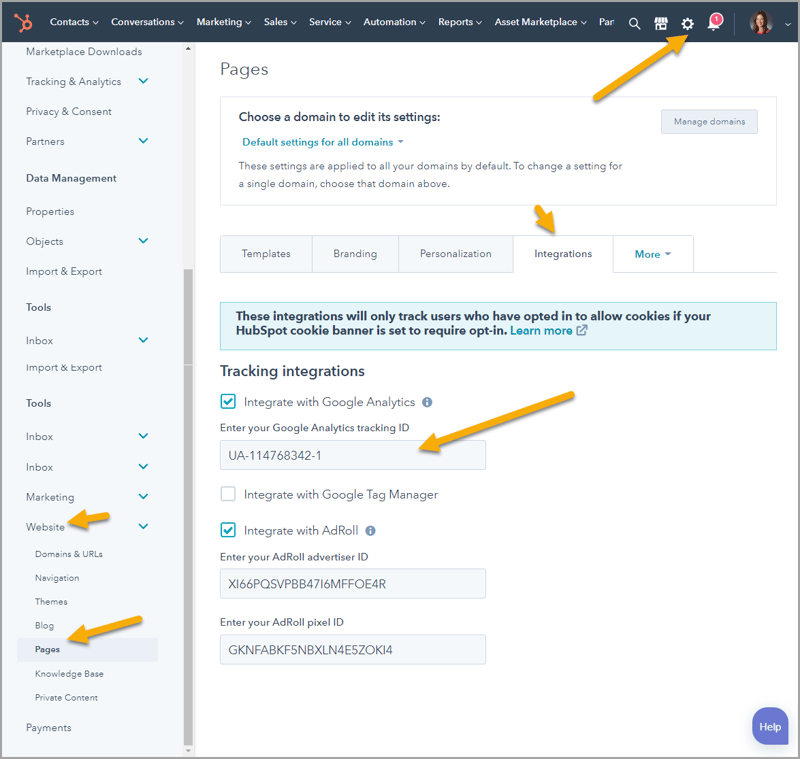
2) Use Google Search Console
Using the sometimes forgotten Google Search Console functionality, you can submit your website whenever you have a structure change, a page change, or new content, and request Google to recrawl your site rather than waiting for Google to make its rounds. Google typically actions recrawl requests anywhere from a few days to a few weeks.
To find the Google Search Console in HubSpot:
- Go to the Settings gear icon
- To the far left, select Integrations—Connect Apps
- Finally, enter the app's name in the All apps search box.
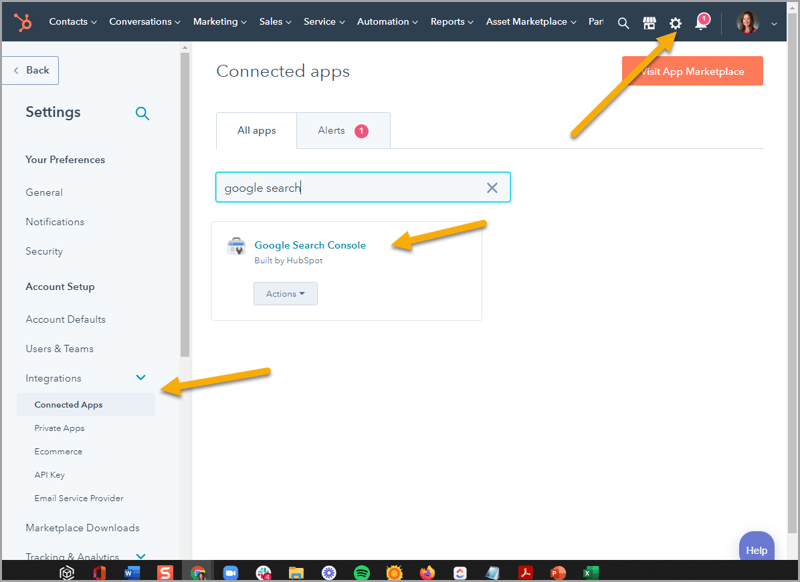
Next, follow these documented steps to set verify your website with Google Search Console.
Now you can put in submissions for a recrawl request as per the below graphic:
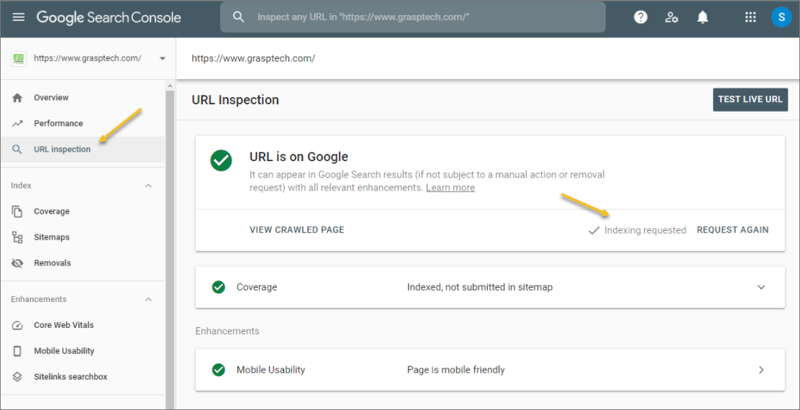
3) Use Google Lighthouse
HubSpot has added the Google Lighthouse performance testing tool to its toolbox, which provides valuable information for improving website performance. To access, go to Marketing, select Website, SEO, and the Recommendations will be revealed.
You should check your website every month or so for issues that sprout up. It gives you all kinds of tips that can work—and sometimes things that will make you roll your eyes—but it is worth the time to go through the suggestions.
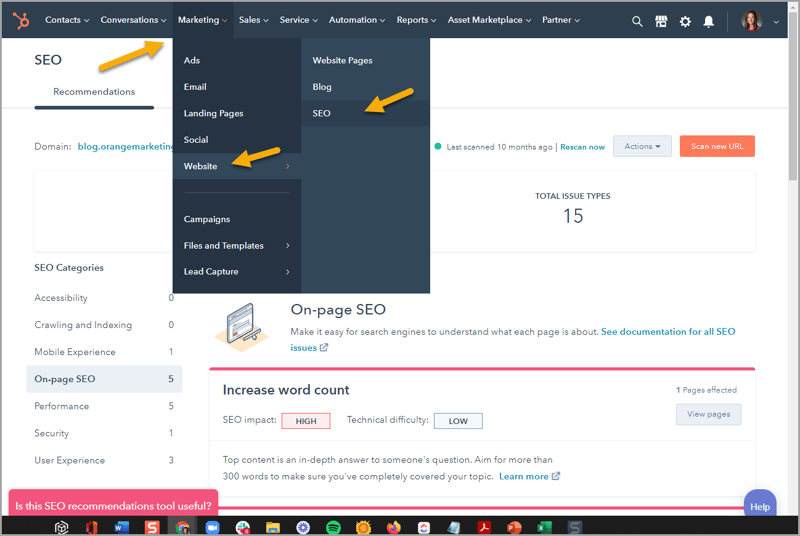
4) Rescan for Optimization Opportunities
HubSpot will remind you to rescan your website from time to time. It is a good idea to do this.
To see if a rescan is suggested, go to the same SEO page you accessed as per the above Lighthouse directions. To the left of the Actions button, you'll find the suggestion "Rescan now" if applicable.
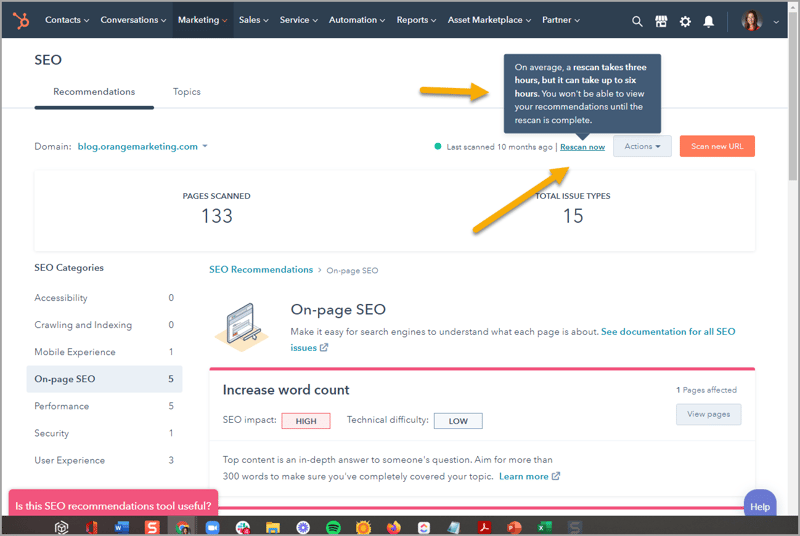
5) On-Page Metadata
HubSpot is excellent at giving you places to put important Google information. The meta description is one such suggestion. USE THE META DESCRIPTION consistently on every single page. We'll let you read the 8 billion articles on SEO advising this on your own.
You'll find the meta description box in the Settings section on a blog post, landing page, or webpage.

BONUS SECRET TIP: Have a standard image for your company that works on social media in the recommended size. Put it on every page with Alt Text. If any page is shared on social, or is Google indexed, there will always be a "Favorite Image"
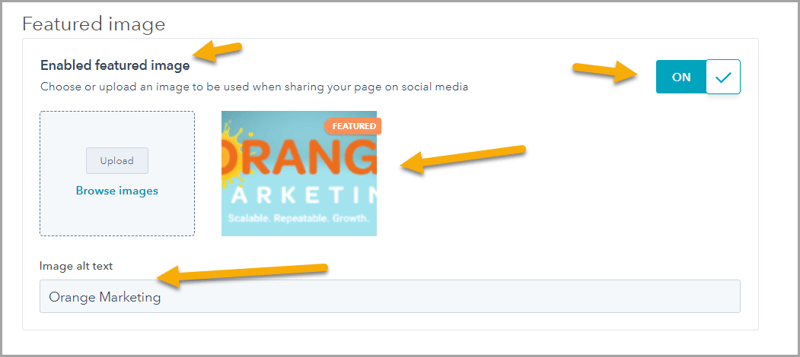
6) Include Alt Text on All Website Images
Use meaningful Alt Text on all images on your website. In your blog, just put the blog post name (our favorite trick) as the Alt Text. Google will reward you in surprising ways. It is well worth the small effort. Feel free to make the Alt Text long and explanatory.
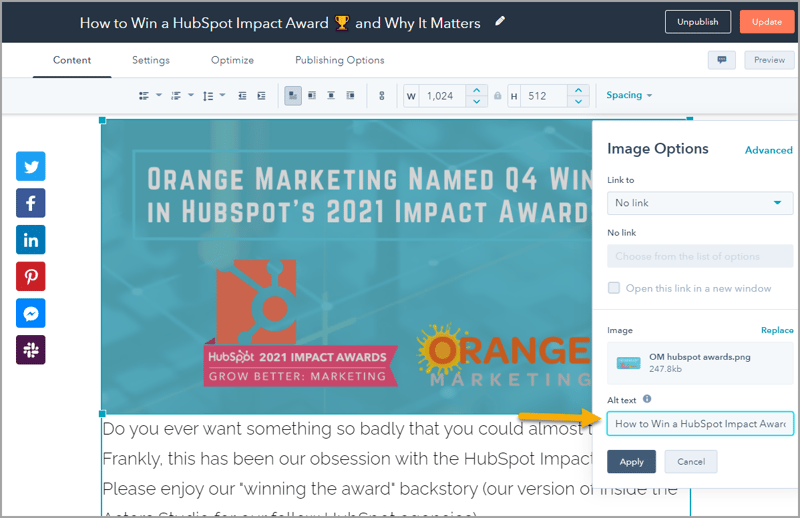
7) Avoid 404s
You should avoid having 404s (page not founds) as they make it harder for Google to crawl and in some cases will hurt your rankings by keeping links to your site from pointing to an active page.
How can you find your 404's? Use your Google Analytics to run a Page Report with a Secondary Dimension of Page Title. Then filter by Page Title NOT by "(not set)".
HubSpot leaves the Page Title blank on 404 pages, revealing where those 404's are!
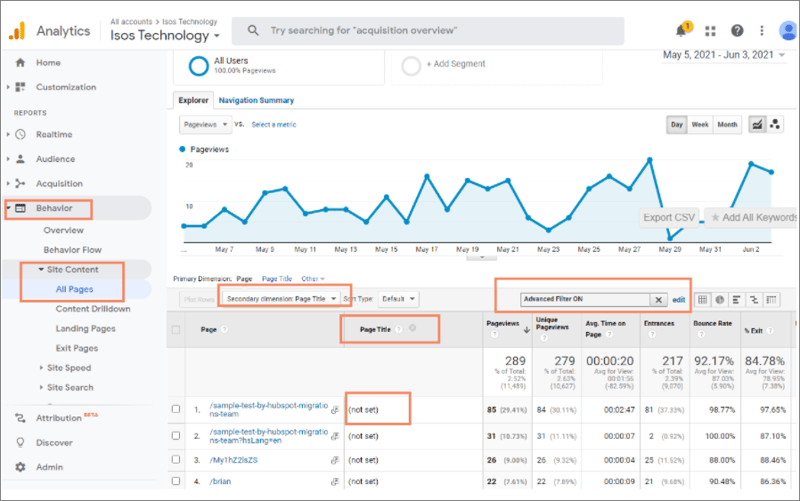
8) Be Efficient with URL Redirects
HubSpot makes dealing with redirects easy. Redirect all your 404s to an appropriate page or the home page. Create vanity URLs if you'd like—the sky's the limit.
You should avoid redirects to redirects to redirects (chain redirects). These also make it harder for Google to crawl your site. And Google will mark you down.
It can be hard to even realize you are doing this without using an advanced tool like SEMRush, so you’ll have to be careful.
A vanity URL can be seen below. In this example:
https://www.orangemarketing.com/4q2021-hubspot-impact-award-case-study
is being forced over to:
https://blog.orangemarketing.com/marketing-and-sales-tool-consolidation-ignites-isostech-revenue-growth
This is due to us needing an open, uncomplicated URL for a press release.
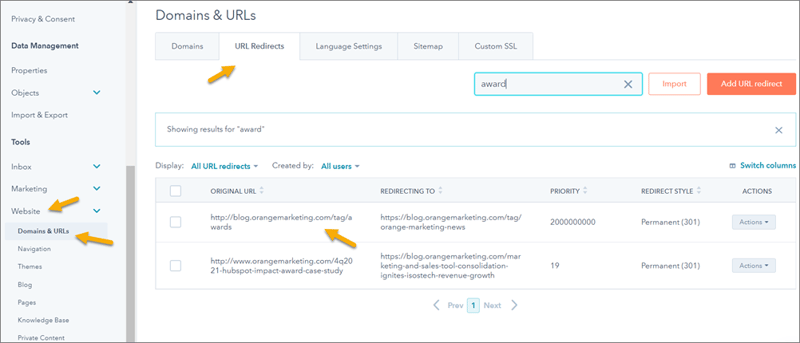
9) Don’t Fear Subdomains but Avoid Using Multiple Domains
Don't worry about using subdomains like blog.orangemarketing.com and help.orangemarketing.com.
Let your I.T. department know that Google’s algorithm is sophisticated enough to see that these subdomains are part of the same domain. It is a myth that using subdomains is bad, which has not been the case for over 10 years now. Have I.T. call me if they give you any crap over subdomains. I enjoy this argument every single time.
Where you do get into trouble is by setting up a bunch of catchy domains that represent one business instead of using subdomains. By setting up multiple domains with various micro-sites (a very 2000s strategy), you are diluting your ranking potential and possibly competing with yourself. Your business needs to concentrate on building up one domain if at all possible, which will help elevate your Google rankings.
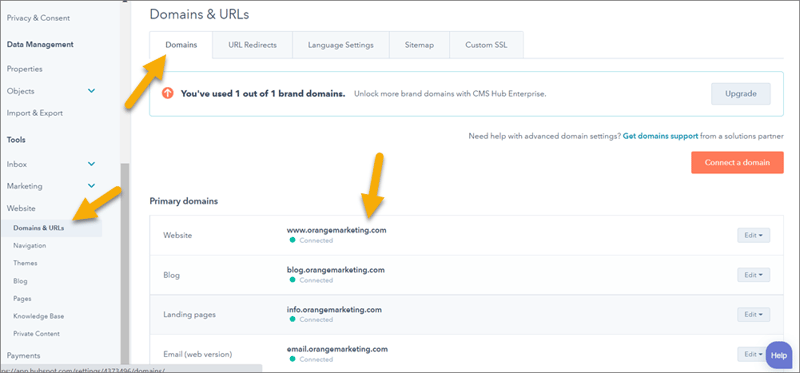
10) Interlinking
Your website needs to point to pages within your website. You have to show Google that you believe in what you are doing so much you link to your own content. We do it constantly. It's a strategy as old as the internet.

11) Content is King
Oh dear. We have written so, so many articles about content. We bore ourselves. There is no real way to trick Google into ranking your website high. But there are many things you can do if you pay attention.
- Write about your business.
- Write long-format content about the problems that are important to your customers and prospects. We and HubSpot call them pillar pages or topic pages. Read our Pillar Page Guidelines. And here is one of our pillar pages: The Truth About B2B Marketing.
- Publish frequently. At least monthly if at all possible.
- A blog strategy helps you achieve this goal because a blog post page is a website page to Google. That is why people blog – to keep a steady stream of content on the internet.
Want to see what else you can achieve with HubSpot?
Check out our case study highlighting how we helped our client FreightPOP, a SaaS startup, optimize their HubSpot for their sales and marketing, which led to significant company growth. See what's possible!
Additional Content Resources:
5 Steps to Effective Content Marketing Campaigns: Free Checklist
5 Minute Video: Creating Content Quickly
Focus Content to Hook Leads - You Only Have Seconds
BioMedGPS SmartTRAK Plays the Long Game With Content Marketing
